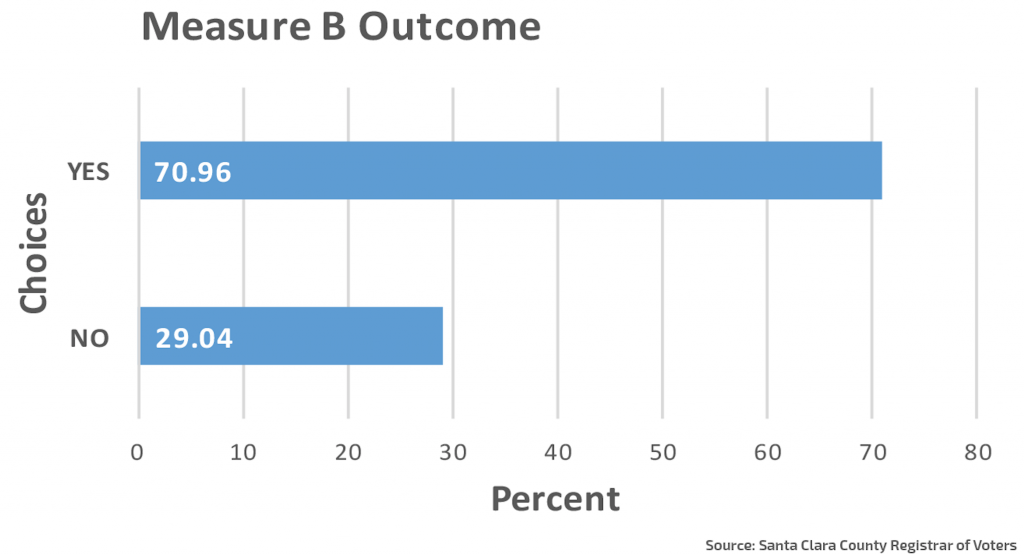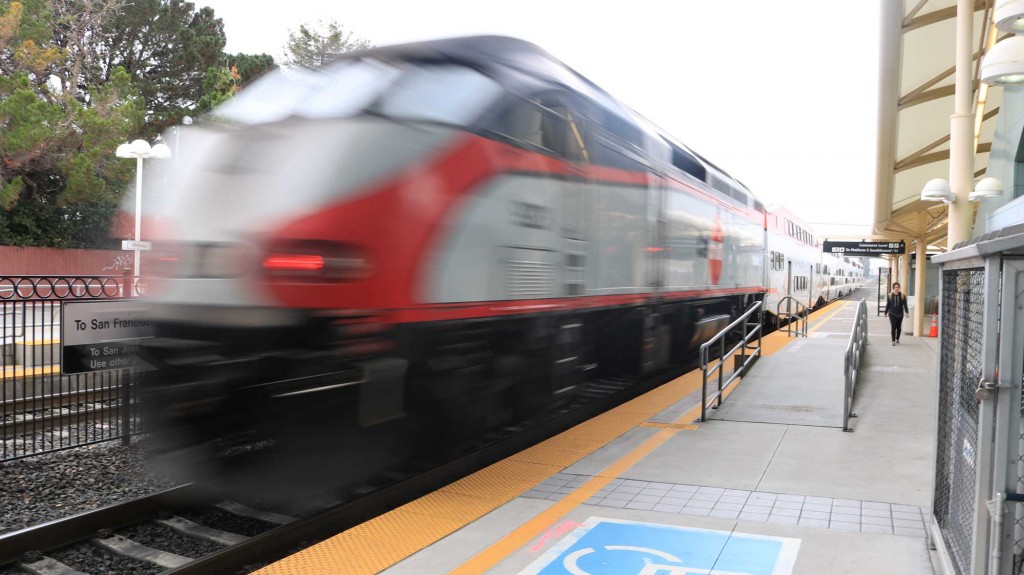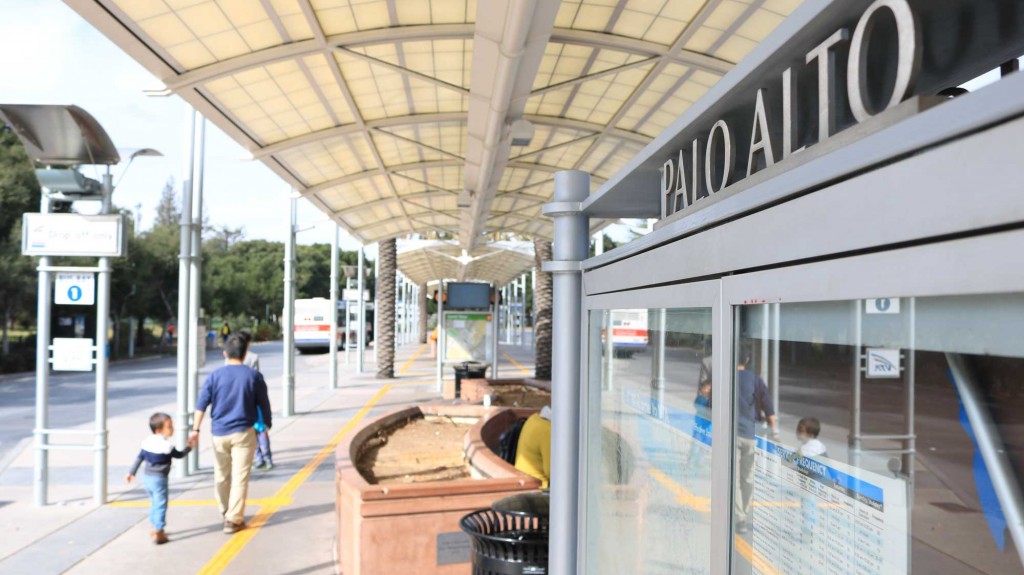[infobox maintitle=”
UPDATE, Nov. 9 at 12:00 p.m. PT – Measure B approved with 70.96 percent of ‘Yes’ votes
” subtitle=”” bg=”gray” color=”black” opacity=”off” space=”30″ link=”no link”]
Measure B, a half-percent sales tax increase to fund transportation projects in Santa Clara County, was approved by voters Nov. 8.
“Measure B’s success is a tribute to the vision and values of Silicon Valley voters. We don’t whine about traffic problems; instead, we find winning solutions to our traffic problems,” Carl Guardino, CEO of the Silicon Valley Leadership Group, a public policy and business trade organization representing over 400 Silicon Valley employers, said in a written statement this morning.

The measure will bring in an estimated $6.3 billion over its 30-year lifespan, with resources allocated to a BART extension and upgrades to Caltrain’s services.
“We’re extremely excited to see that the voters of Santa Clara County firmly backed a Measure that will fund transportation projects that benefit all road users,” Colin Heyne, deputy director of the Silicon Valley Bicycle Coalition, said in an email to Peninsula Press.
He hopes that VTA delivers on the promise of a “complete streets requirement.” It means the $1.2 billion intended for maintaining and repairing local streets and roads would be used to improve the conditions for all its users, including motor vehicles, bicycles and pedestrians.
Original story:
[dropcap letter=”S”]anta Clara County voters are being asked to approve a 0.5-percent sales tax increase to fund transportation projects as the region struggles with soaring commuter traffic and crumbling roads.
As a specific purpose measure, Measure B needs a two-thirds majority, and the additional tax revenue must be spent on transportation improvements. Non-specific purpose measures would only need a simple majority vote.
Measure B supporters include the Silicon Valley Leadership Group, a public policy and business trade organization, the Silicon Valley Bicycle Coalition, and other nonprofits, which argue a separate funding source is necessary to improve the traffic situation in Santa Clara County.

They are facing opposition from the Sierra Club’s Loma Prieta Chapter, the BayRail Alliance – a volunteer transit consumer group – and the Silicon Valley Taxpayers Association – which serves the interests of Silicon Valley taxpayers against the government. These organizations claim that many of the measure’s projects are unnecessary.
Some of the intended uses defined in Measure B include a BART extension through San Jose to Santa Clara, improvements to freeways, local roads and Caltrain safety upgrades.
An increase of 0.5-percent would raise the sales tax from 8.75 percent in 14 Santa Clara County cities to 9.25 percent. In Campbell, where it is already at 9 percent, it would rise to 9.5 percent.
In its 30-year life span, Measure B could generate $6.3 billion in funds, said Carl Guardino, CEO of the Silicon Valley Leadership Group. Of that, approximately $1.2 billion would fund fixing potholes and improving local streets, $1.5 billion would go to the BART extension and another $1.5 billion to pay for enhancing highway interchanges and expressways. Caltrain would receive roughly $1 billion to separate the tracks from street level and increase its service. And $250 million would be allocated to bicycle and pedestrian projects. The remaining funds would be used for VTA transit operations and transit relief on the Highway 85 corridor.
“The goal of Measure B is to bring meaningful traffic relief throughout Santa Clara County and Silicon Valley through transit alternatives, traffic improvements and repairs to the crumbling conditions of our local streets and roads,” Guardino said.

The vote on Measure B could affect nearly two million county residents, plus tens of thousands of commuters in surrounding areas who use Santa Clara County streets and public transit to get to and from work.
According to Census data, the Bay Area’s population has grown more than 7 percent since 2010, adding even more congestion to the roads.
Santa Clara County is emblematic of a regional trend. At least nine transportation sales tax measures are on ballots this year in California, said Colin Heyne, deputy director of the Silicon Valley Bicycle Coalition.
Measure B’s critics say some of the allocations of new tax revenue don’t make sense. The $1.5 billion in tax revenue intended for the BART extension would be better used elsewhere, said Andy Chow, president of the BayRail Alliance. “That particular segment will be right next to Caltrain. Why do we need to build a rail line right next to another active rail line?” Chow asked.
Opponents like Andrew Boone, a member of the Sierra Club’s Loma Prieta Chapter, said he doesn’t oppose the idea of a tax hike for transportation projects. Rather, his group is challenging how funds would be distributed. It is “absolutely inadequate” to only allocate $250 million to bike and pedestrian projects, Boone said. “That will make almost no noticeable difference in how hazardous it is to walk and bike in Santa Clara County.”
[metaslider id=8543]
As the debates over spending the funds continue, residents are welcoming the idea of traffic relief. “I’m a native Californian, I’m native to the Bay Area. I’ve watched traffic increase over the years. So anything that could help the traffic flow would probably be something I support,” said Maria Judnick, a lecturer at Santa Clara University.
Lisa Fabiny, a Los Gatos resident, said some of the improvements wouldn’t help her. “I don’t know if it’s fair to charge everyone in order to get transportation that won’t affect everyone,” Fabiny said in an interview. She said she would like to take public transit, but “even if BART is extended or Caltrain is extended a little bit, it’s not going to reach me.”
But there is one important aspect Measure B supporters and opponents agree upon: the Caltrain grade separation. Measure B would fund bridges and underpasses at key intersections where Caltrain tracks cross major streets and roads. Between 2004 and 2014, a total of 141 people died on the tracks, a Caltrain report shows. Although on average nearly 10 of the 13 deaths each year are found to be suicides, a better grade separation could prevent both suicides and unintended fatalities.
